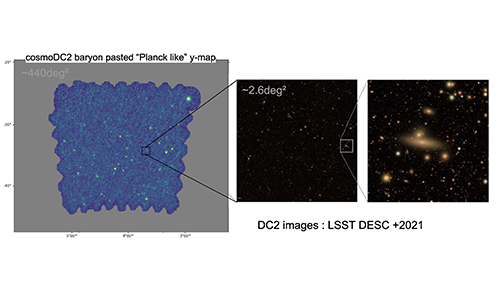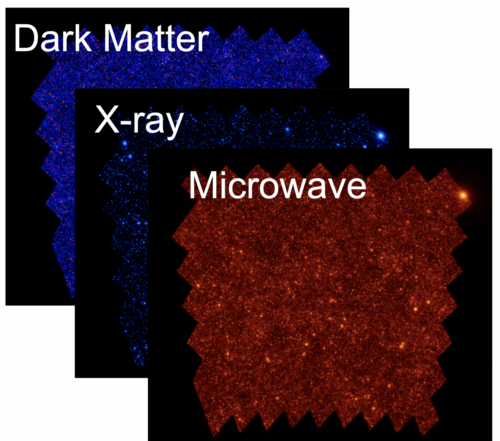Dash Stevanovich

This summer I am working in the Computational Cosmology group under Prof. Daisuke Nagai as part of the Baryon Pasting (BP) collaboration.
The BP collaboration is the international collaboration focused on creating computational efficient models of the universe by painting baryons (gas and stars) onto dark matter (DM) halos in order to bridge the gap between the robust theoretical predictions based on DM-only N-body simulations to multi-wavelength astronomical observations of the universe. By developing a novel framework for modeling the non-linear structure formation physics and the DM halo-gas-stars connection, the primary science goal of this project is to achieve accurate (< a few percent level) cosmological constraints on the nature of dark energy and dark matter.
Specifically, my work focuses on modelling the profiles and shapes of X-ray emitting gas in galaxy clusters. In collaboration with Dr. Andrew Hearin (Argonne National Laboratory) and Dr. Erwin Lau (Harvard Smithsonian Astrophysical Observatory), I am currently developing a new model of DM halos that is designed to predict observable properties of DM halos originating from their diverse formation histories. To do this, I use the Yale High-Performance Computing cluster to analyze the outputs of modern cosmological simulations. I also plan to accelerate the calculations of the improved BP model using the AI-based acceleration technique, which enables fast emulation of microwave, optical and X-ray skies (e.g., shown in the figure in the top-left panel) for a broad range of cosmological and astrophysical parameter space - one of the grand challenges facing modern data-driven cosmology!
Shown above is an example Baryon Pasted Planck CMB map (left panel) and galaxy images (in the right two panels) in the LSST DESC cosmoDC2 simulation. The BP team plans to apply my improved, AI-accelerated model to simulate a plethora of ongoing and upcoming cosmological surveys, including Rubin and DESI (in optical), Simons Observatory & CMB-S4 (in microwave) to eROSITA (in X-ray) in order to enable new discoveries in cosmology and astrophysics.
